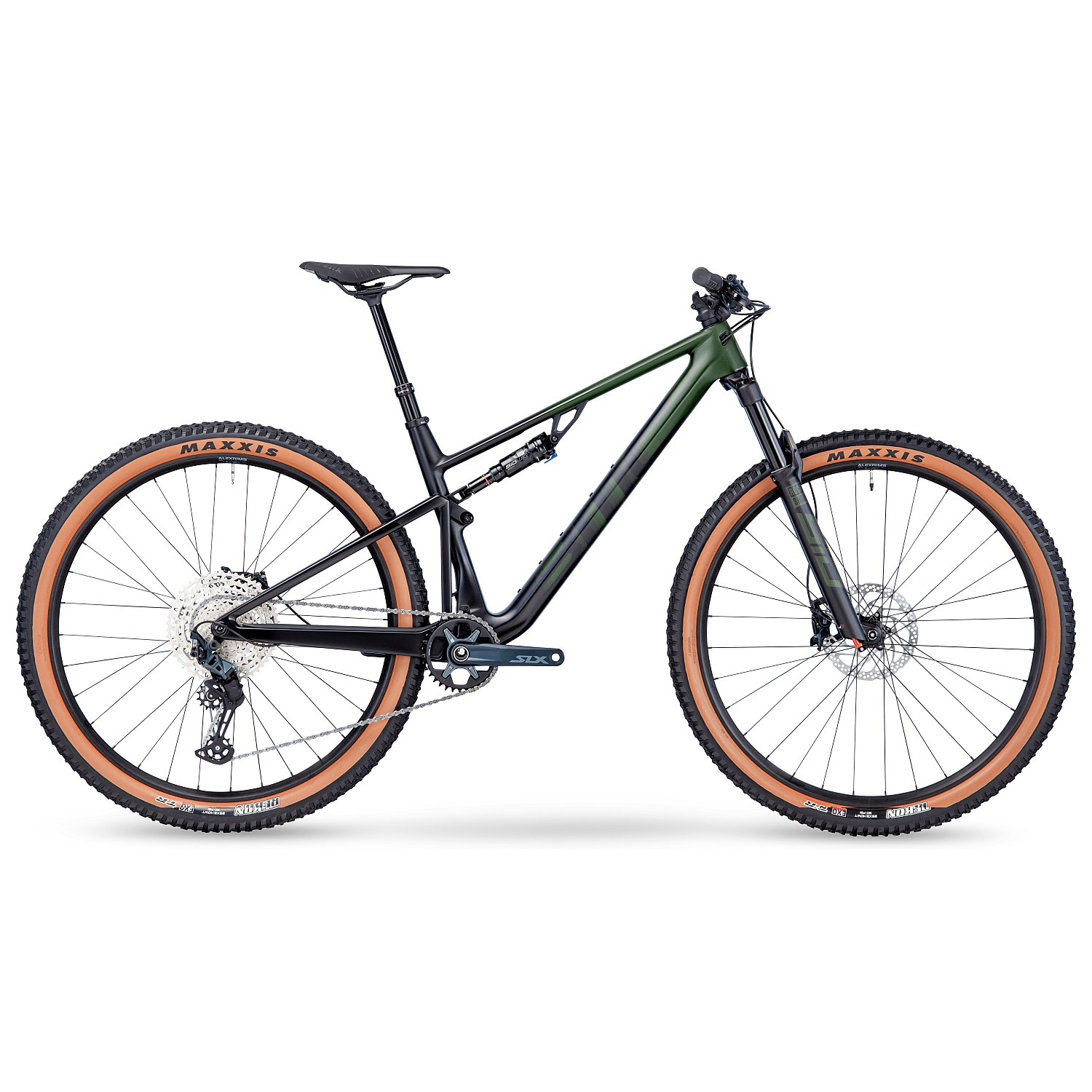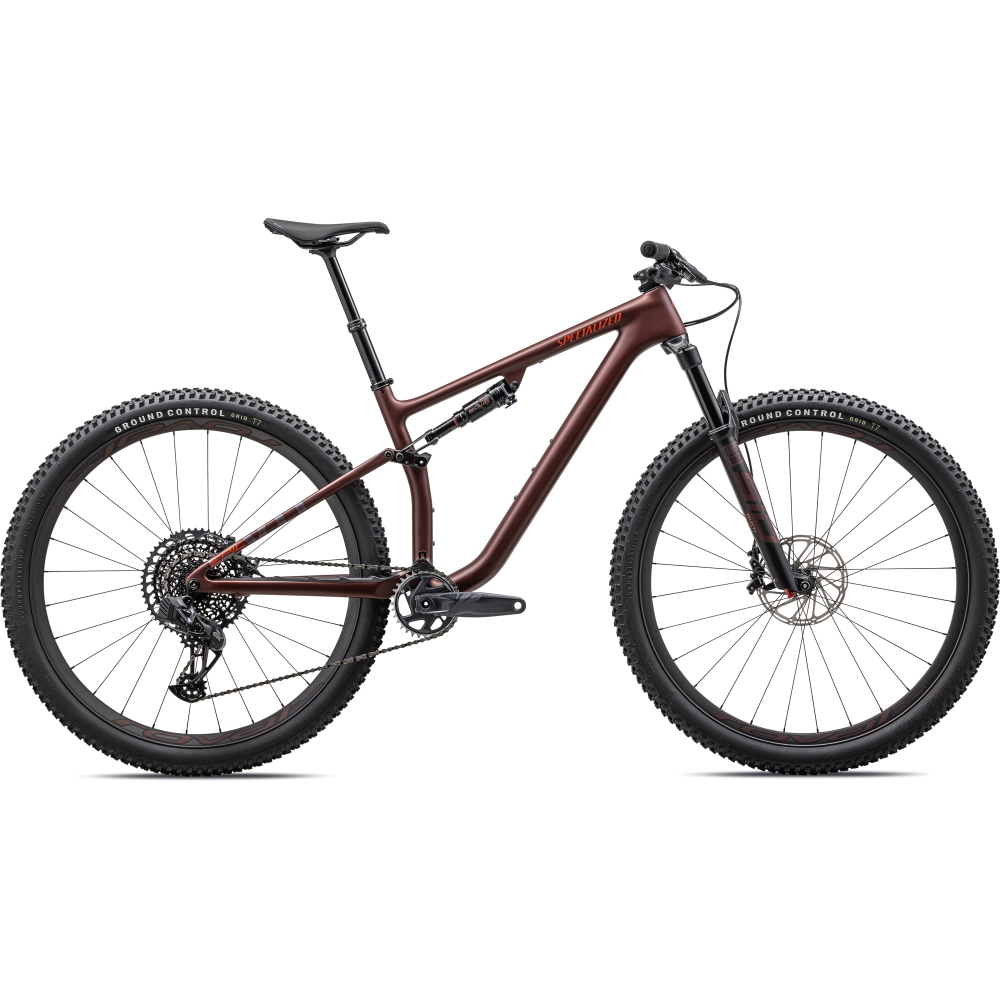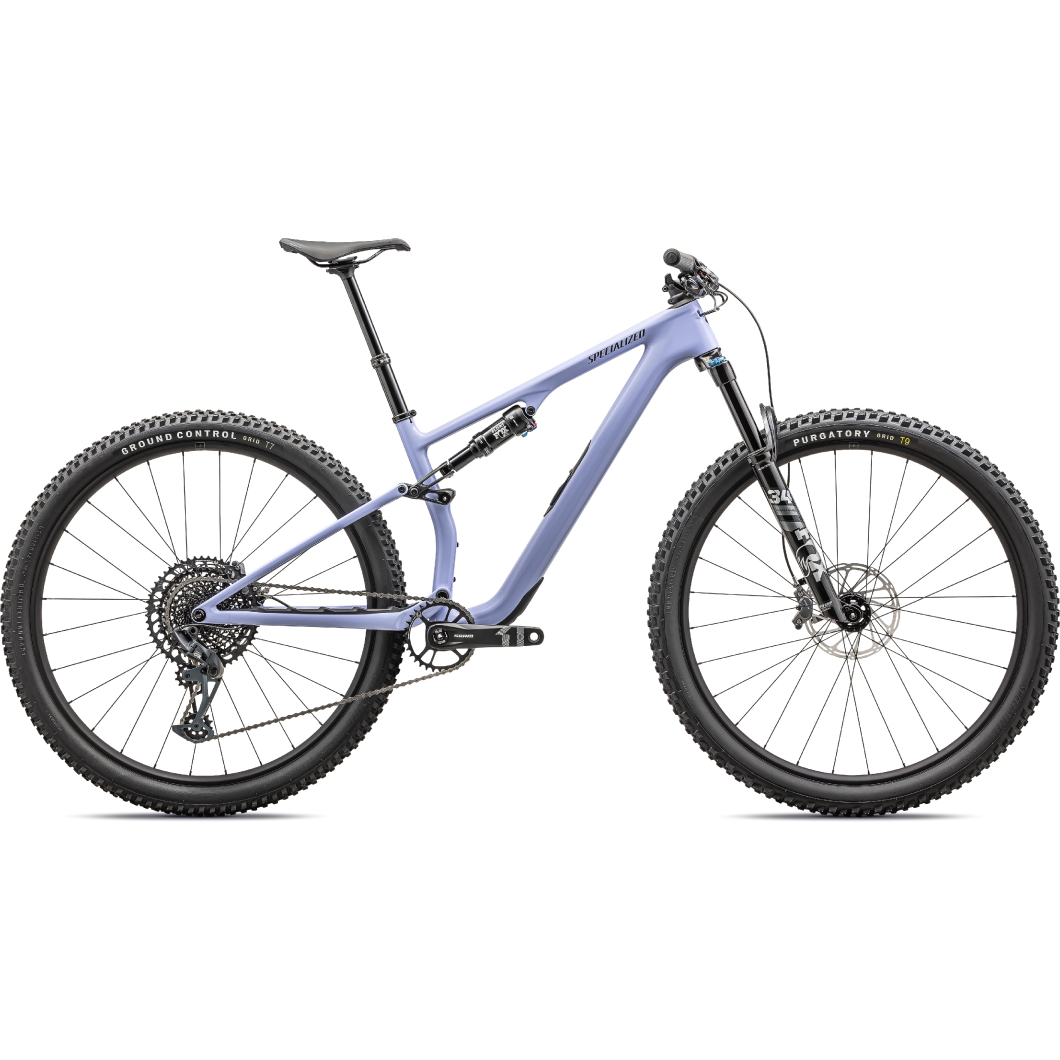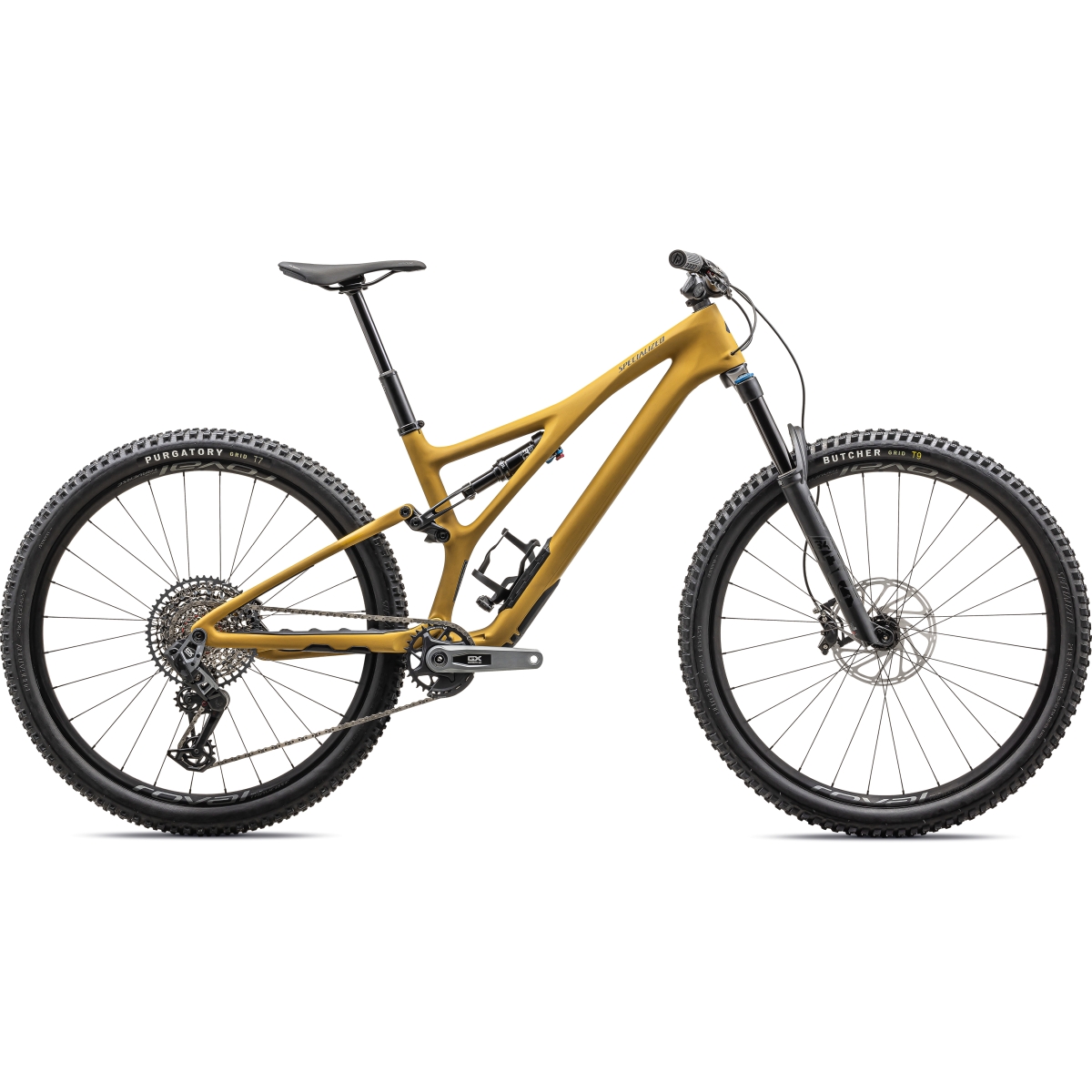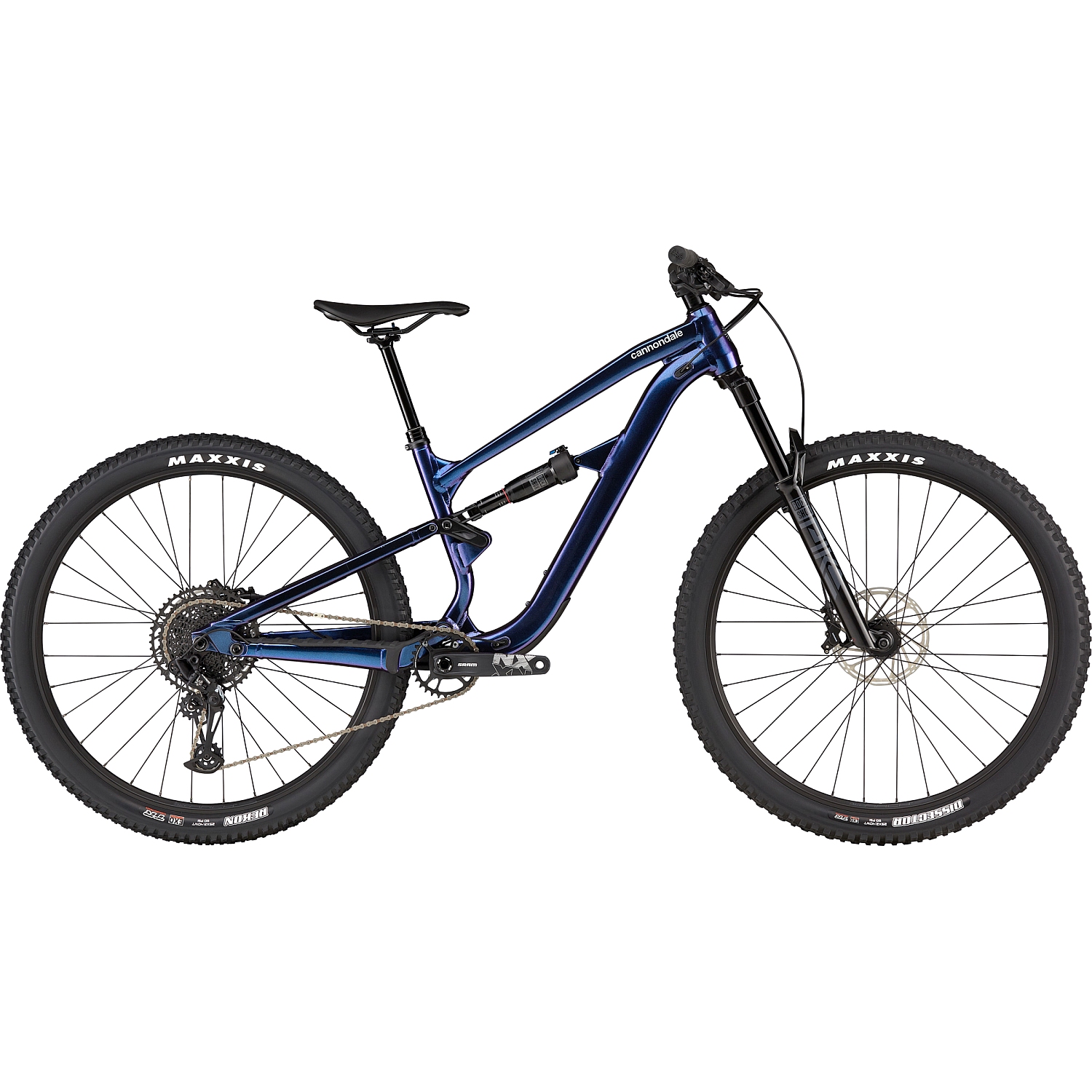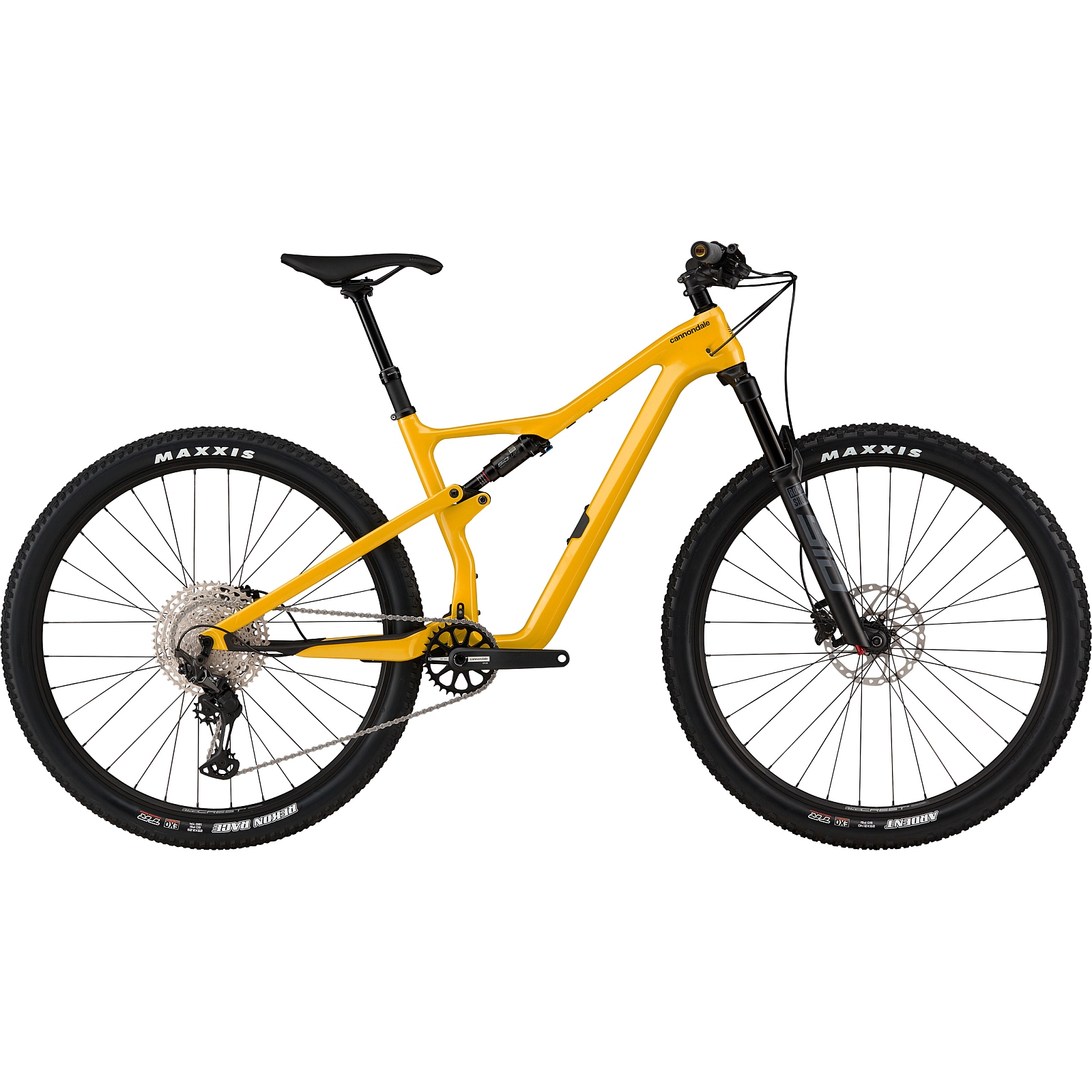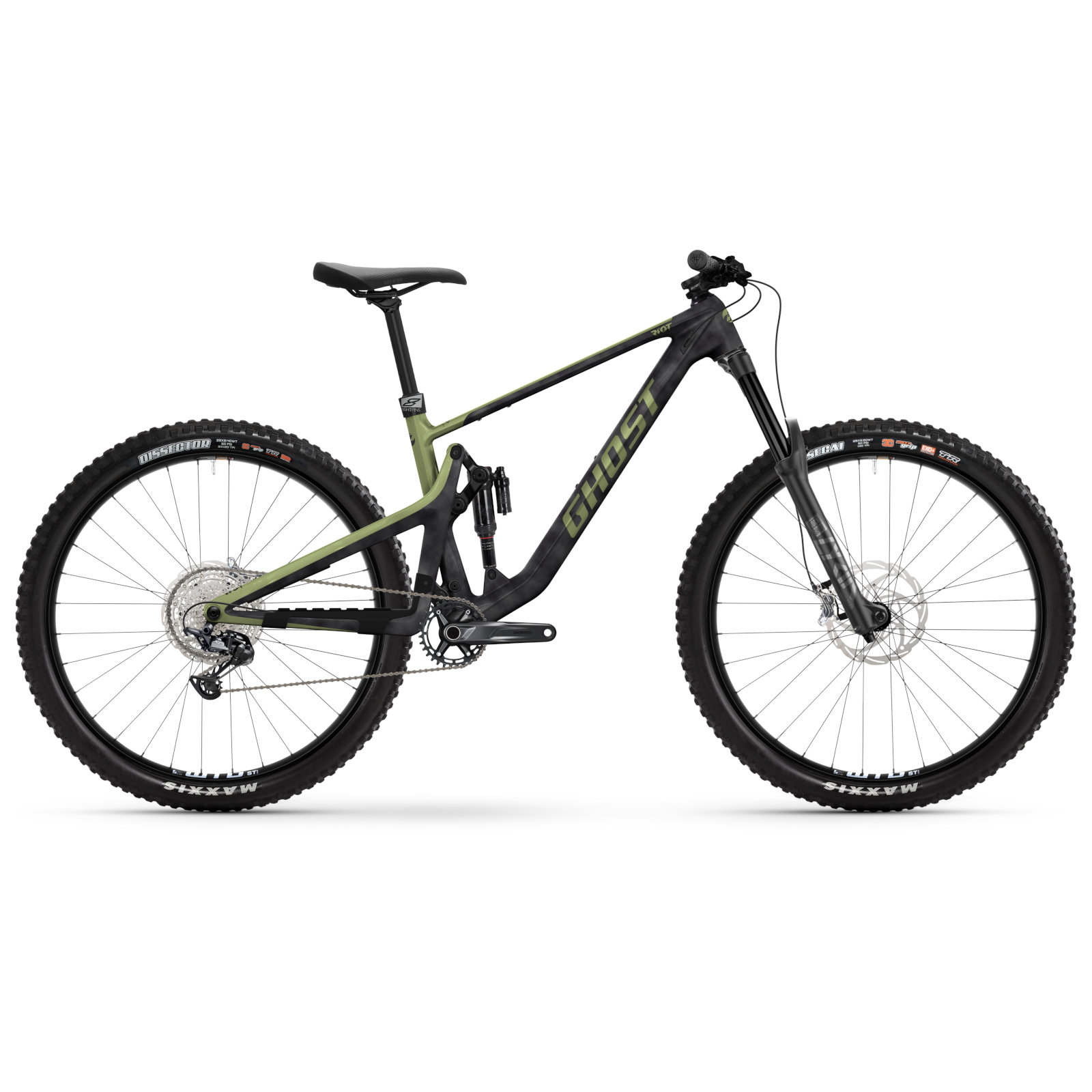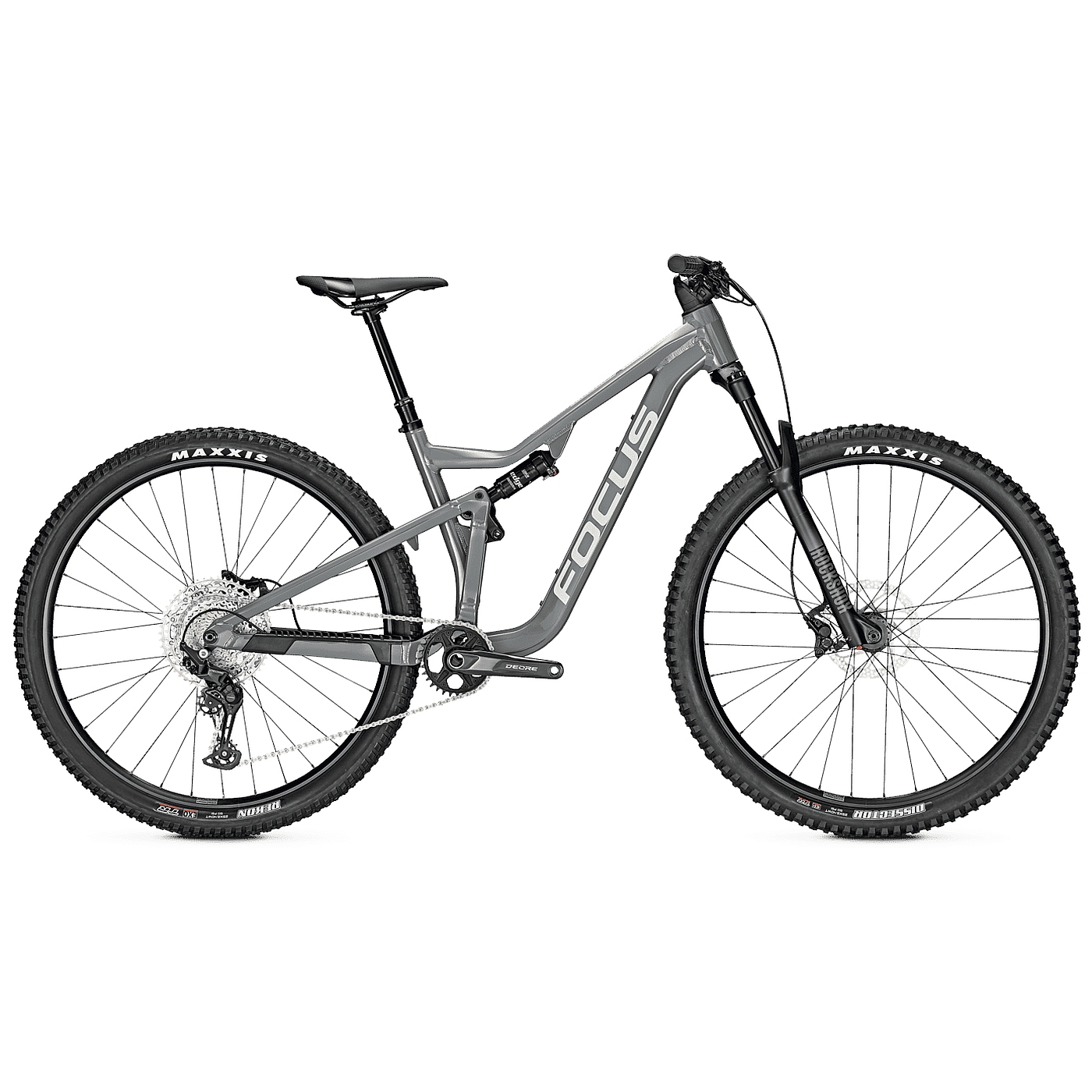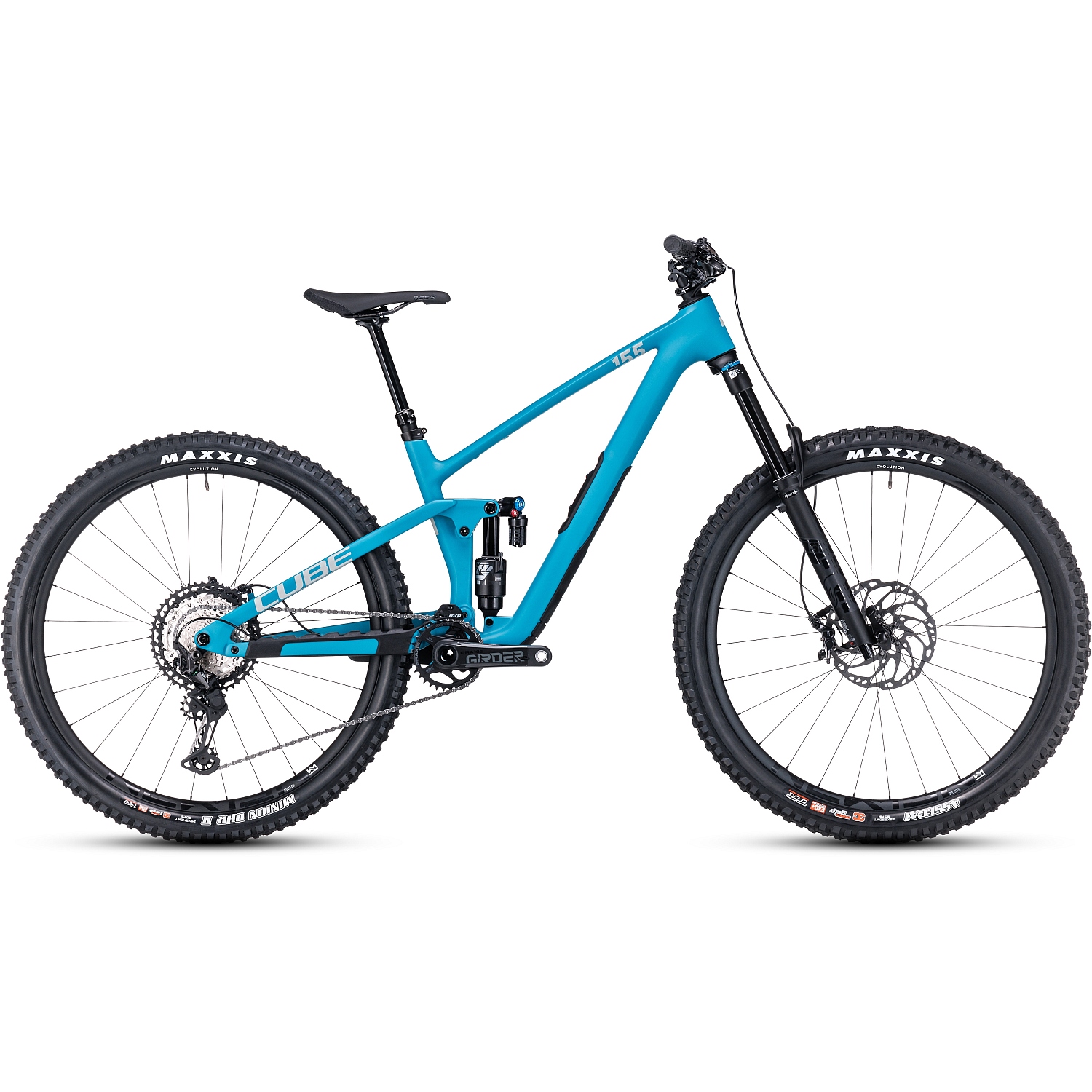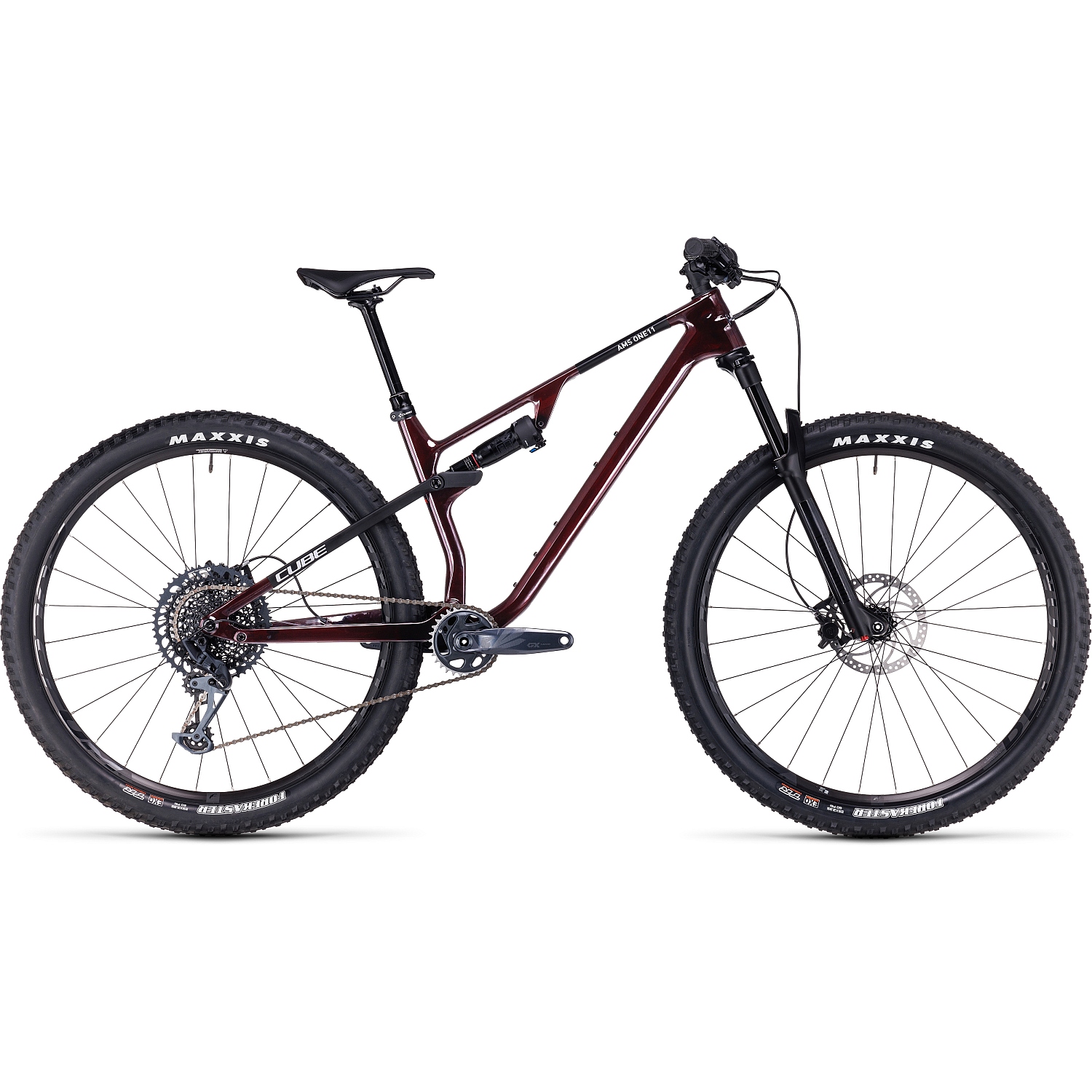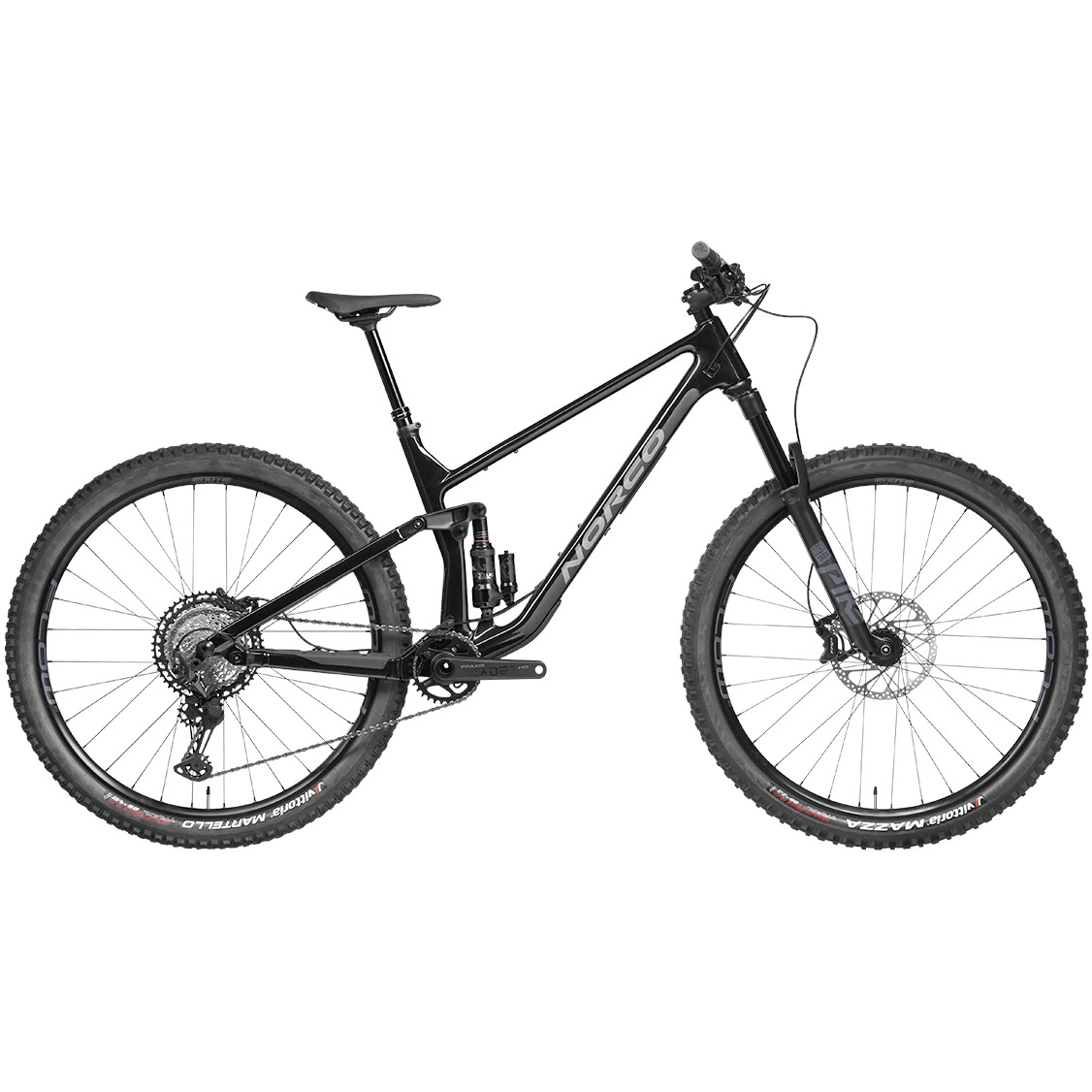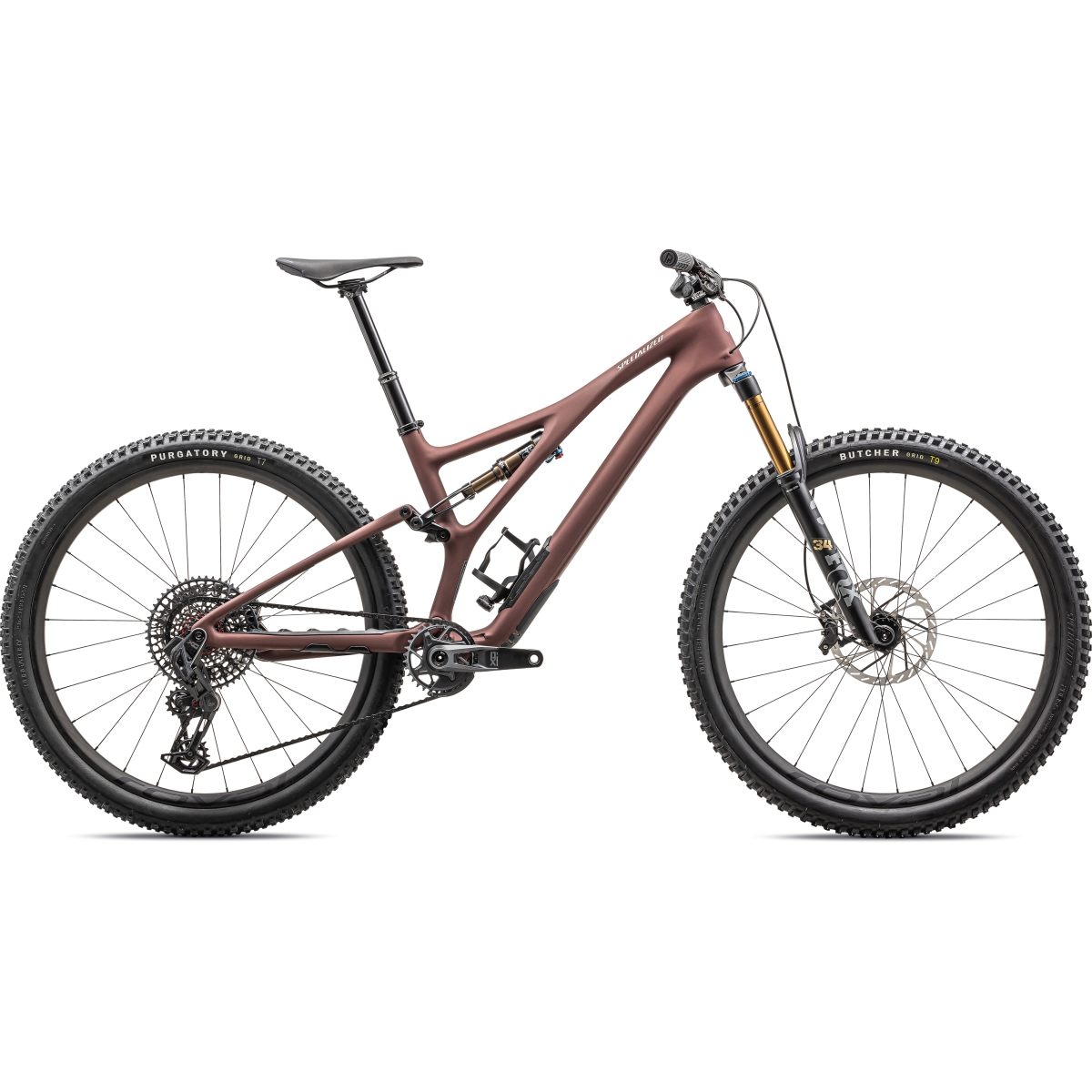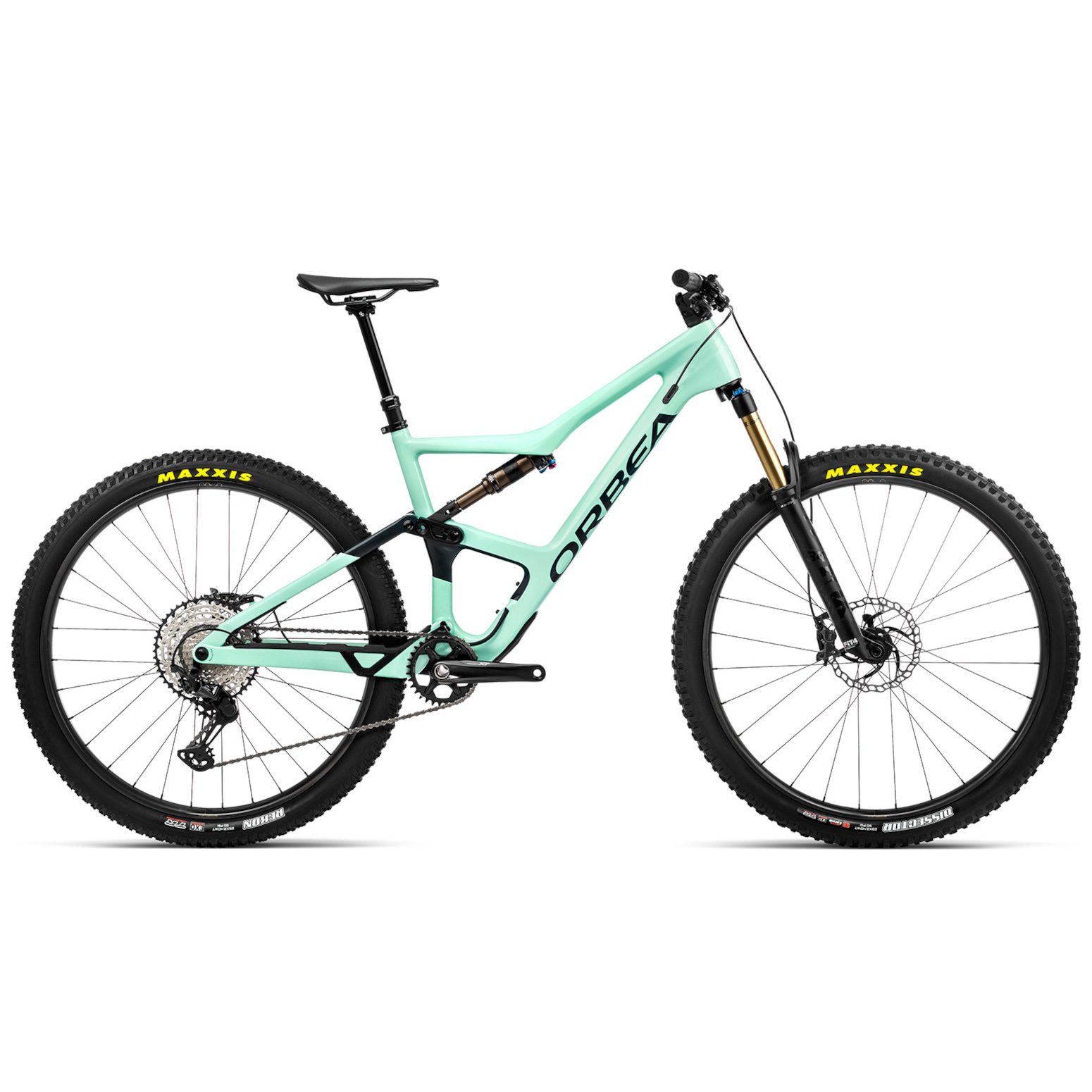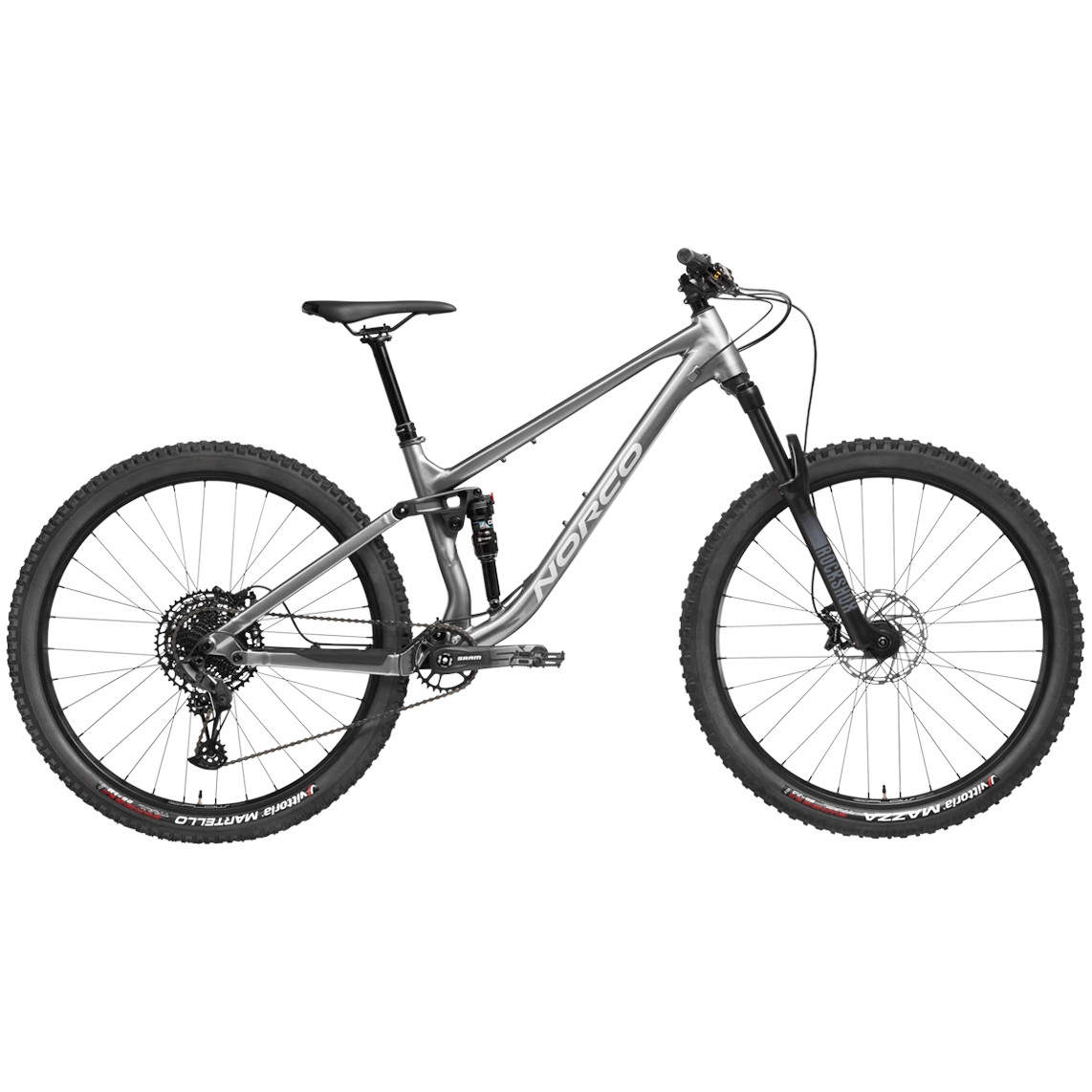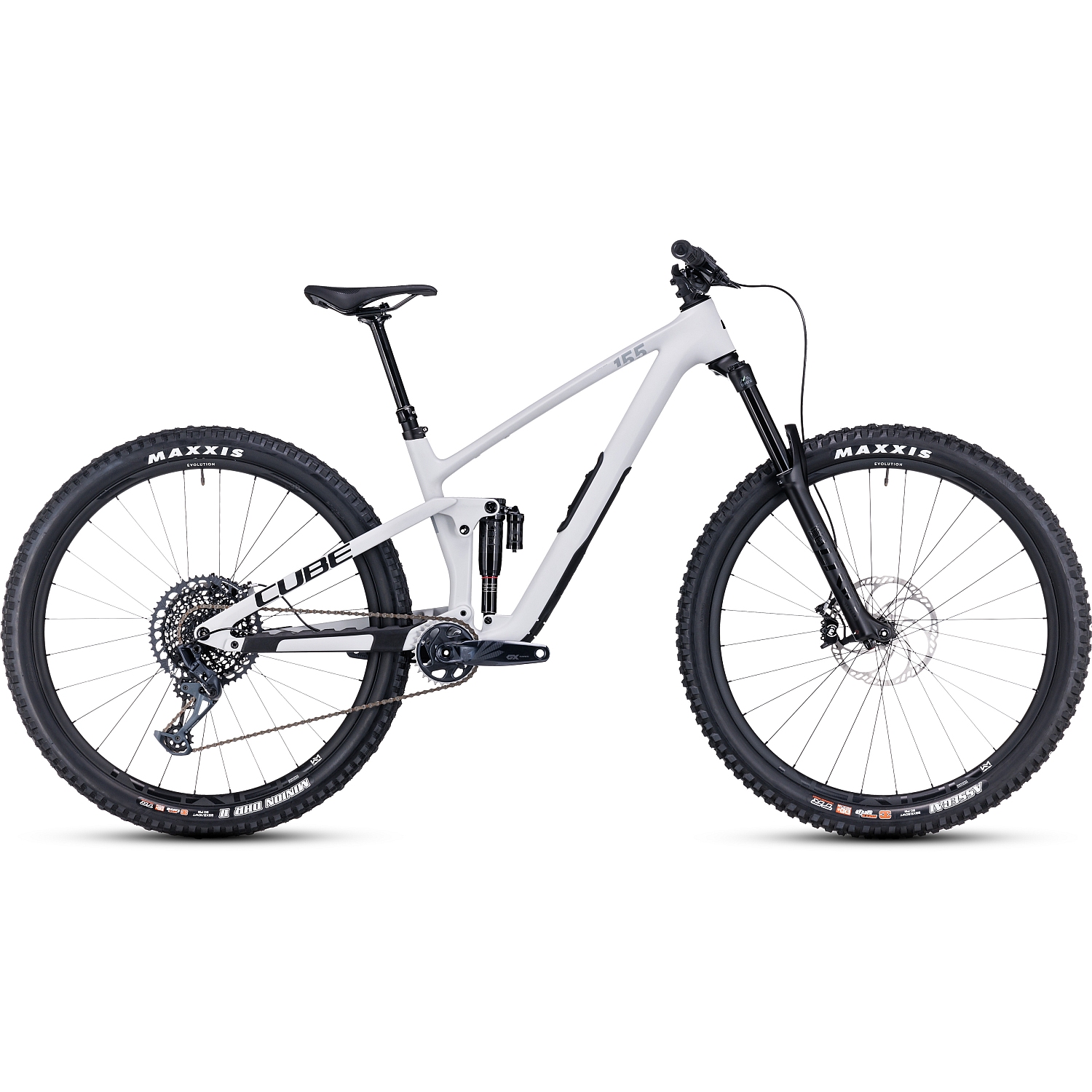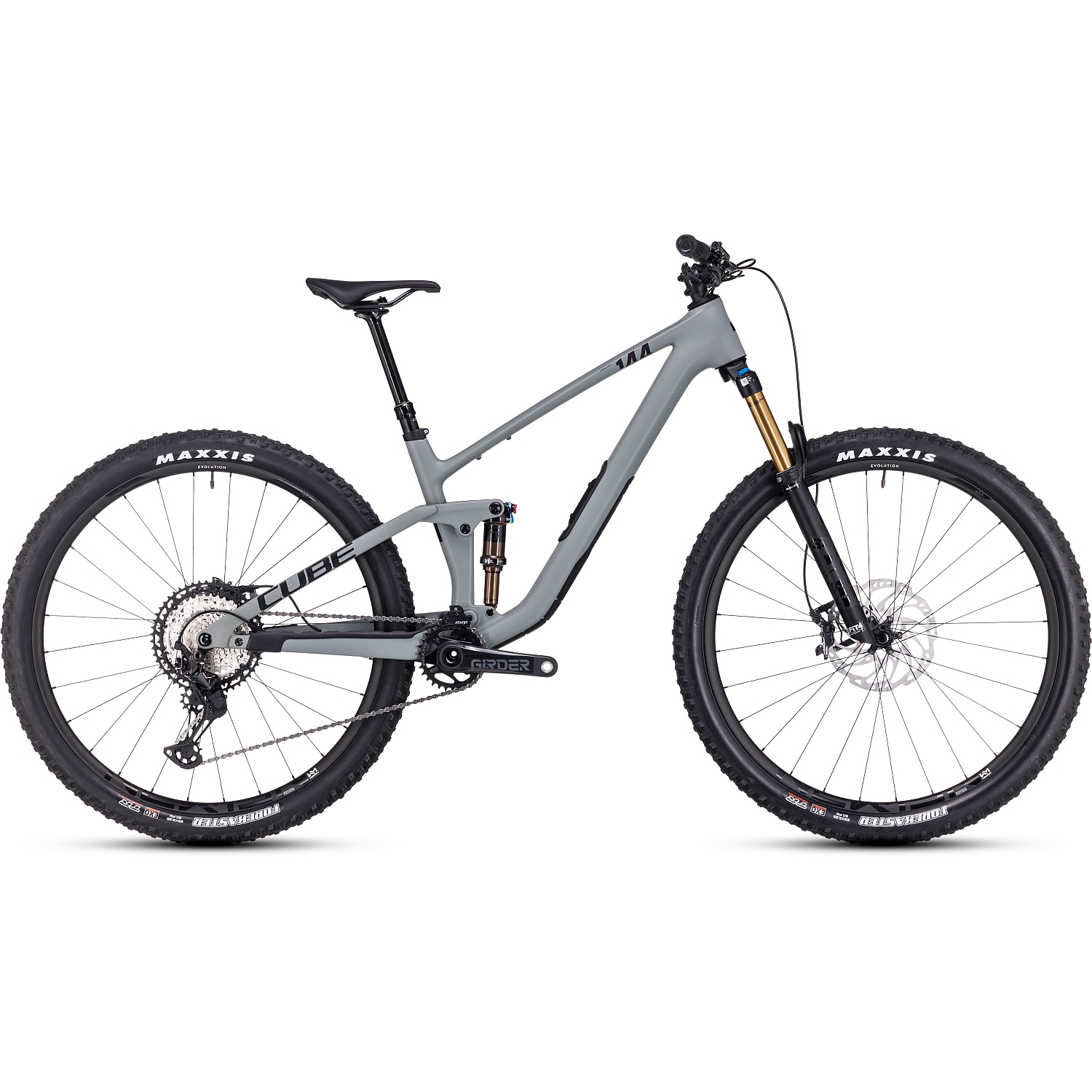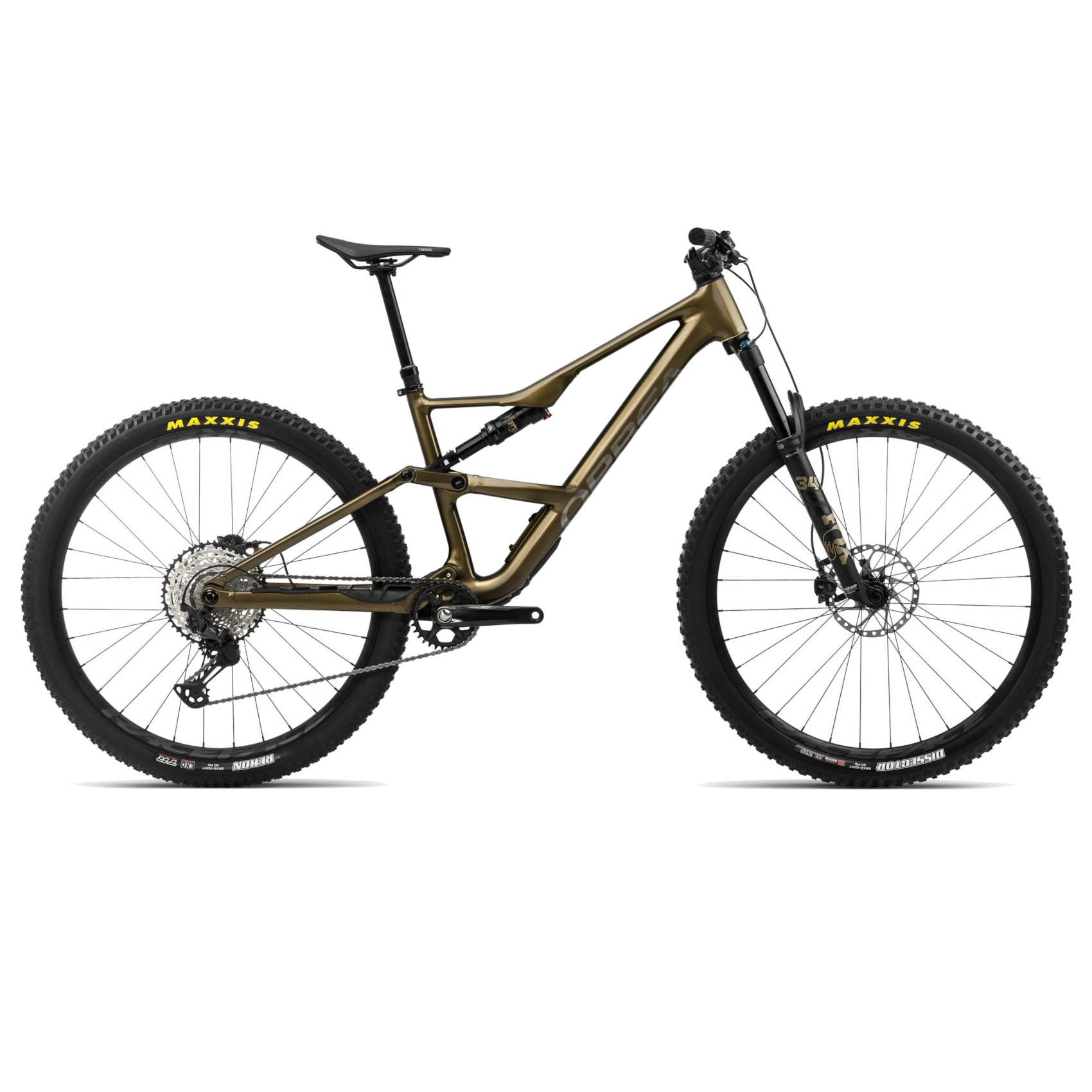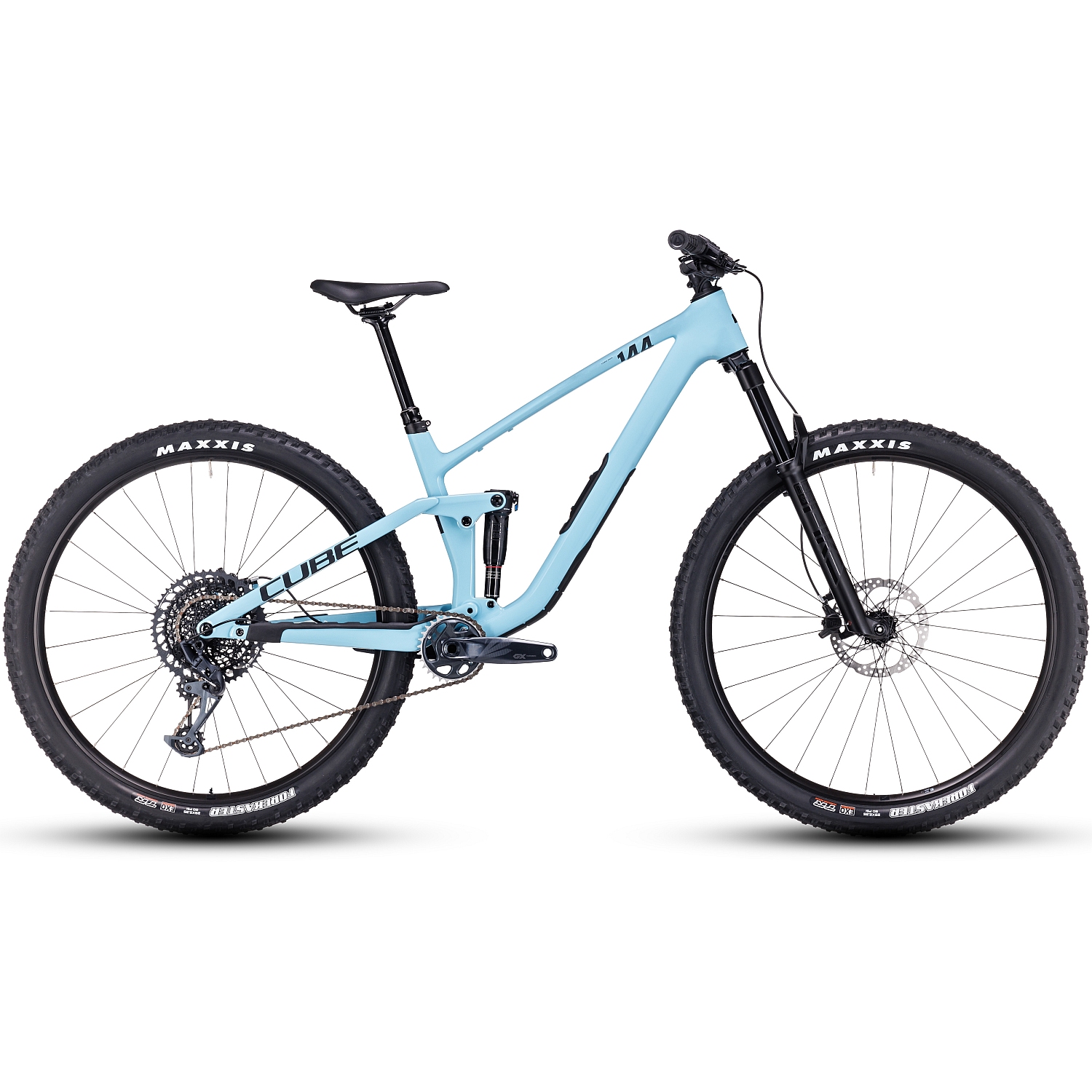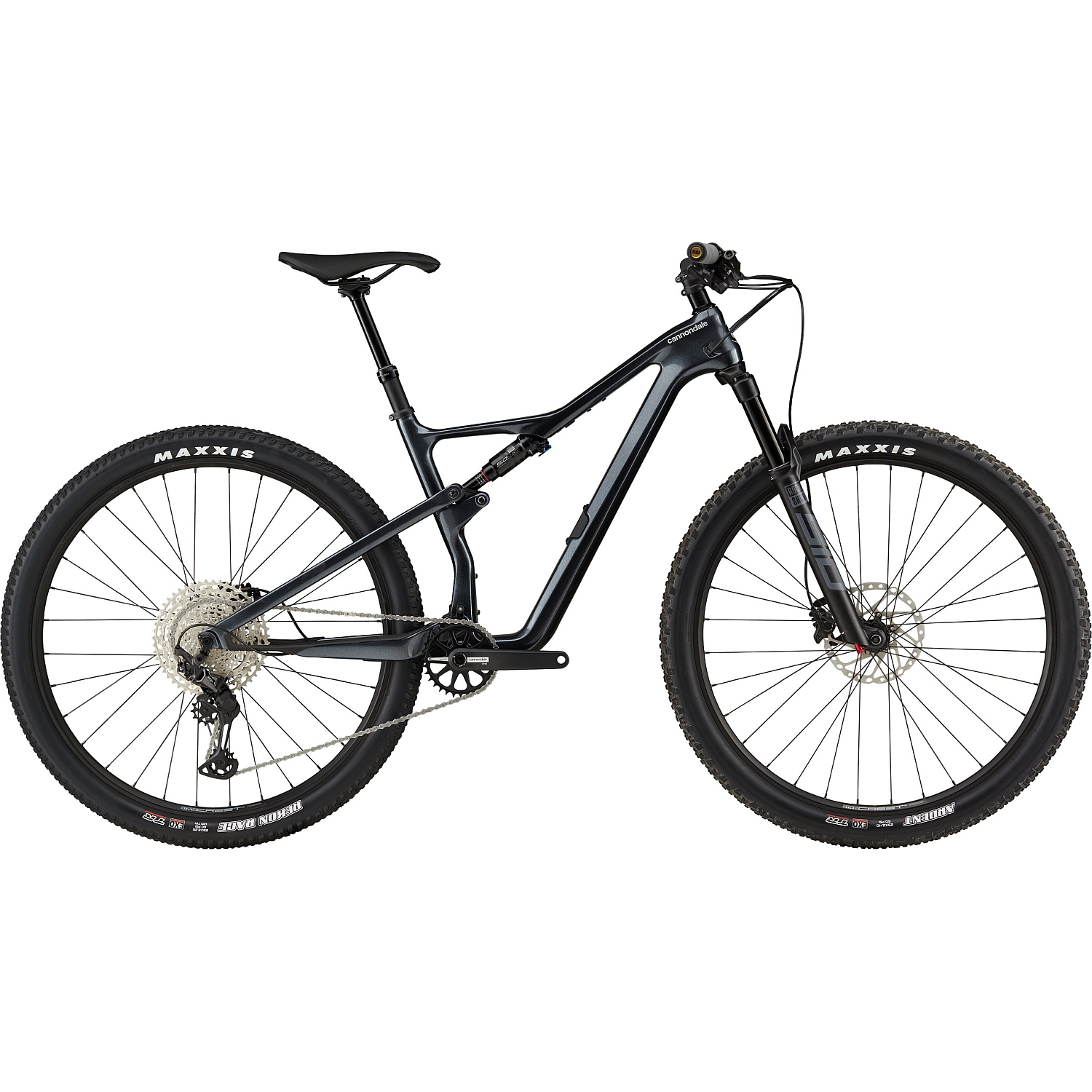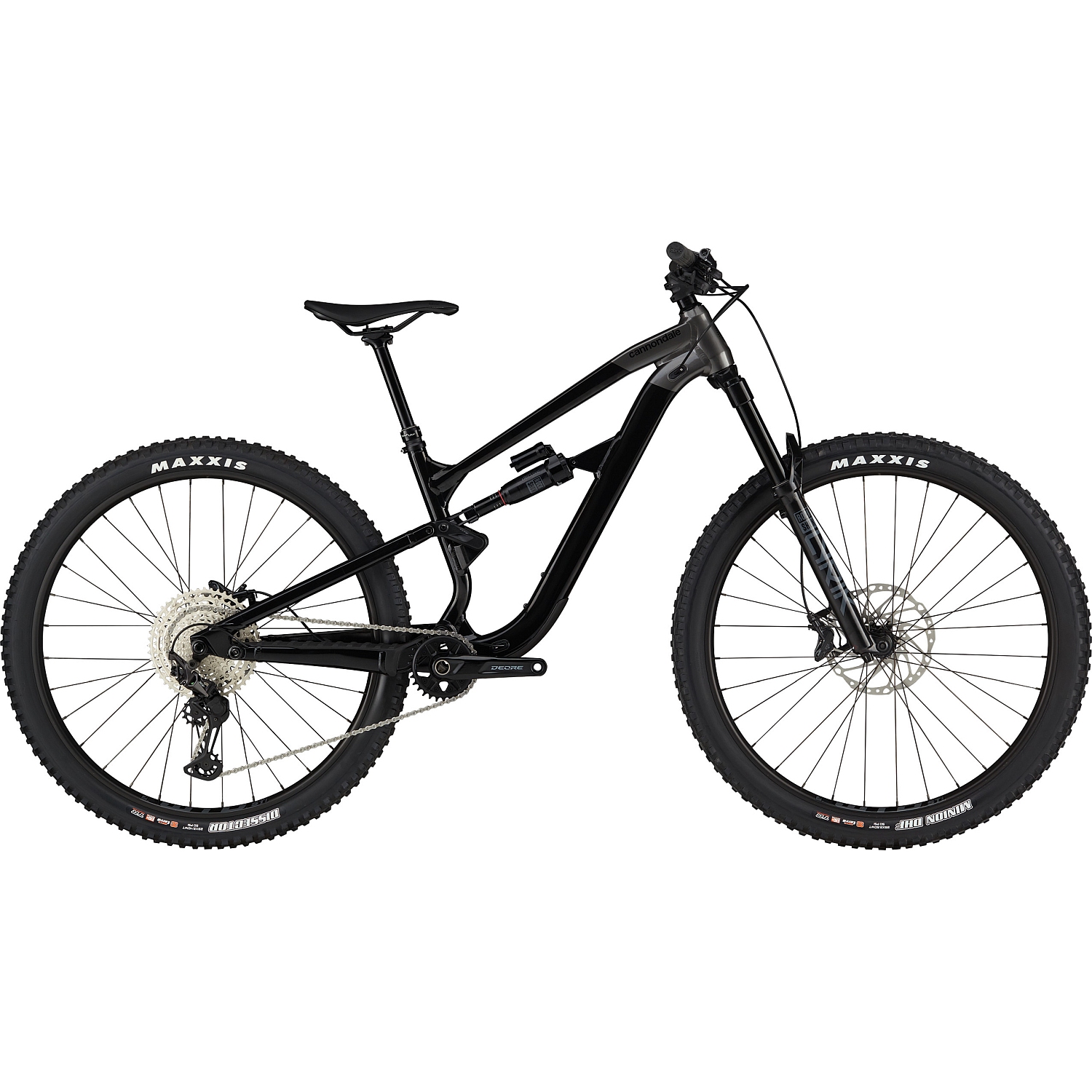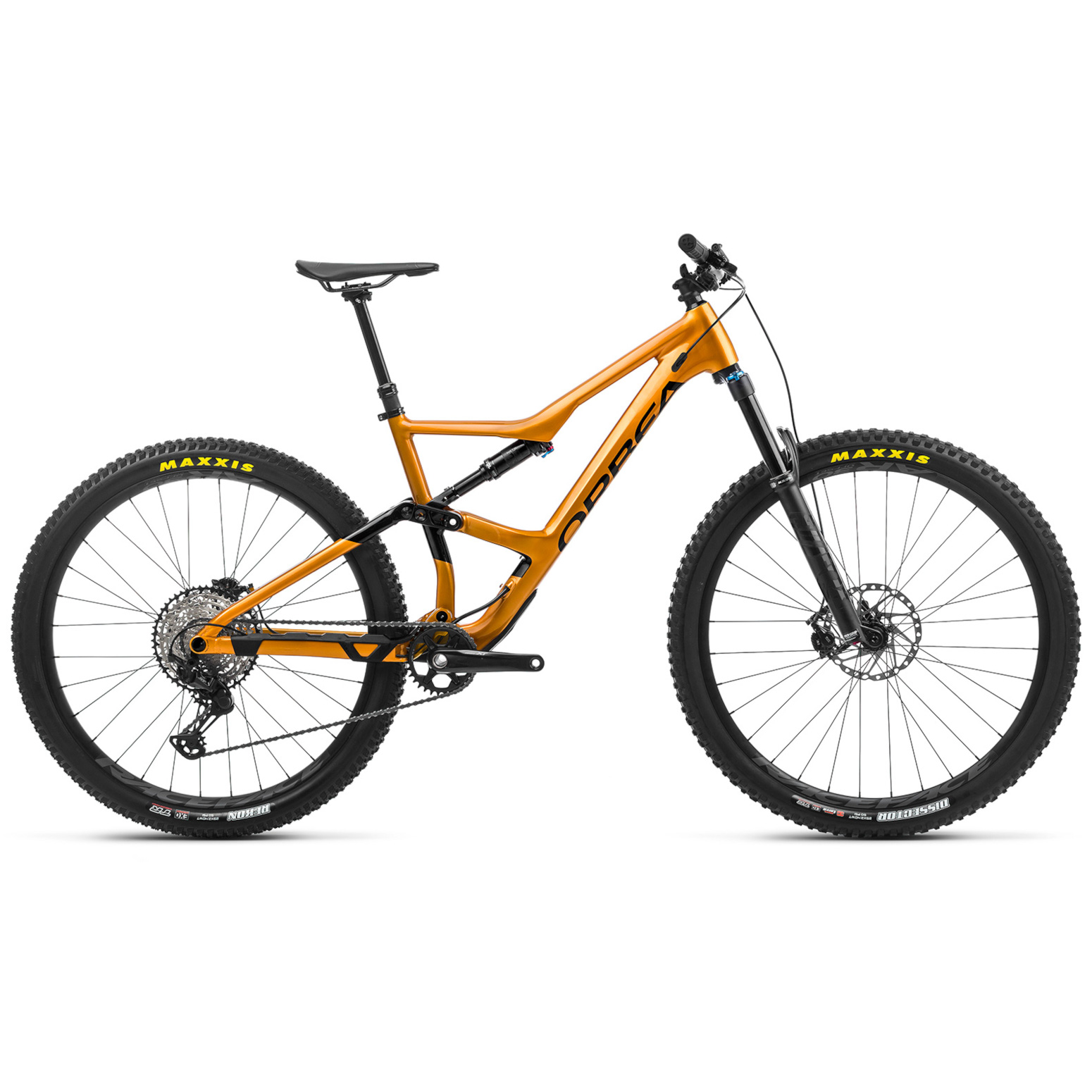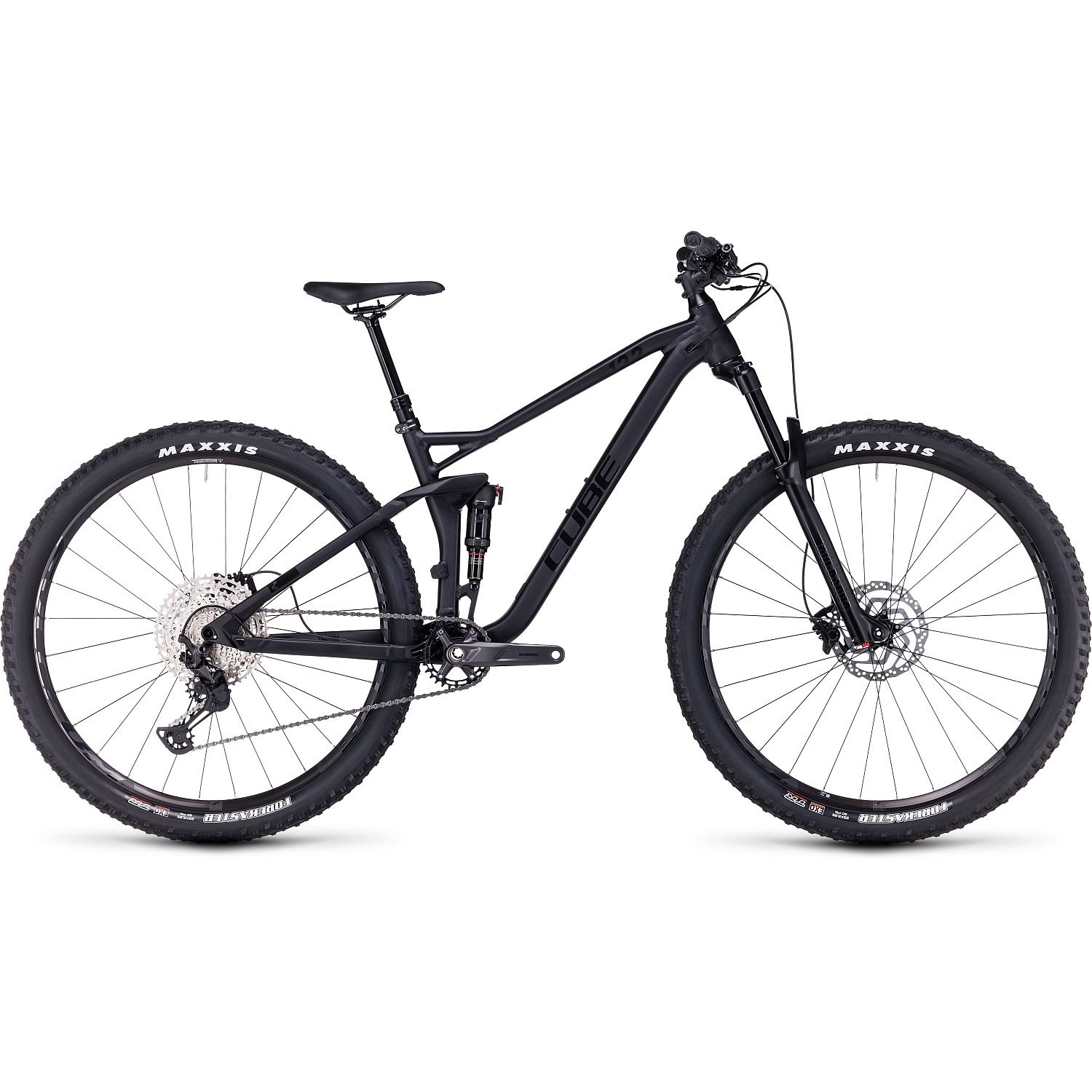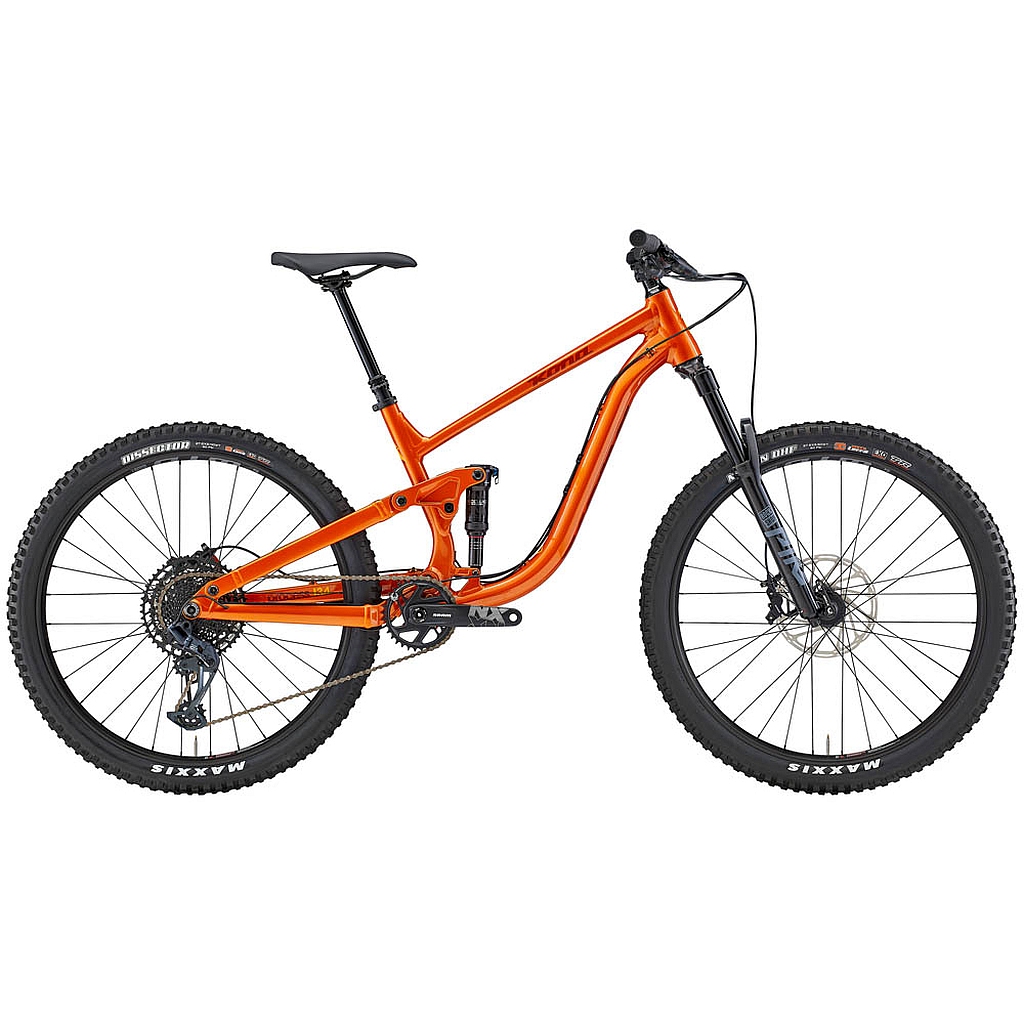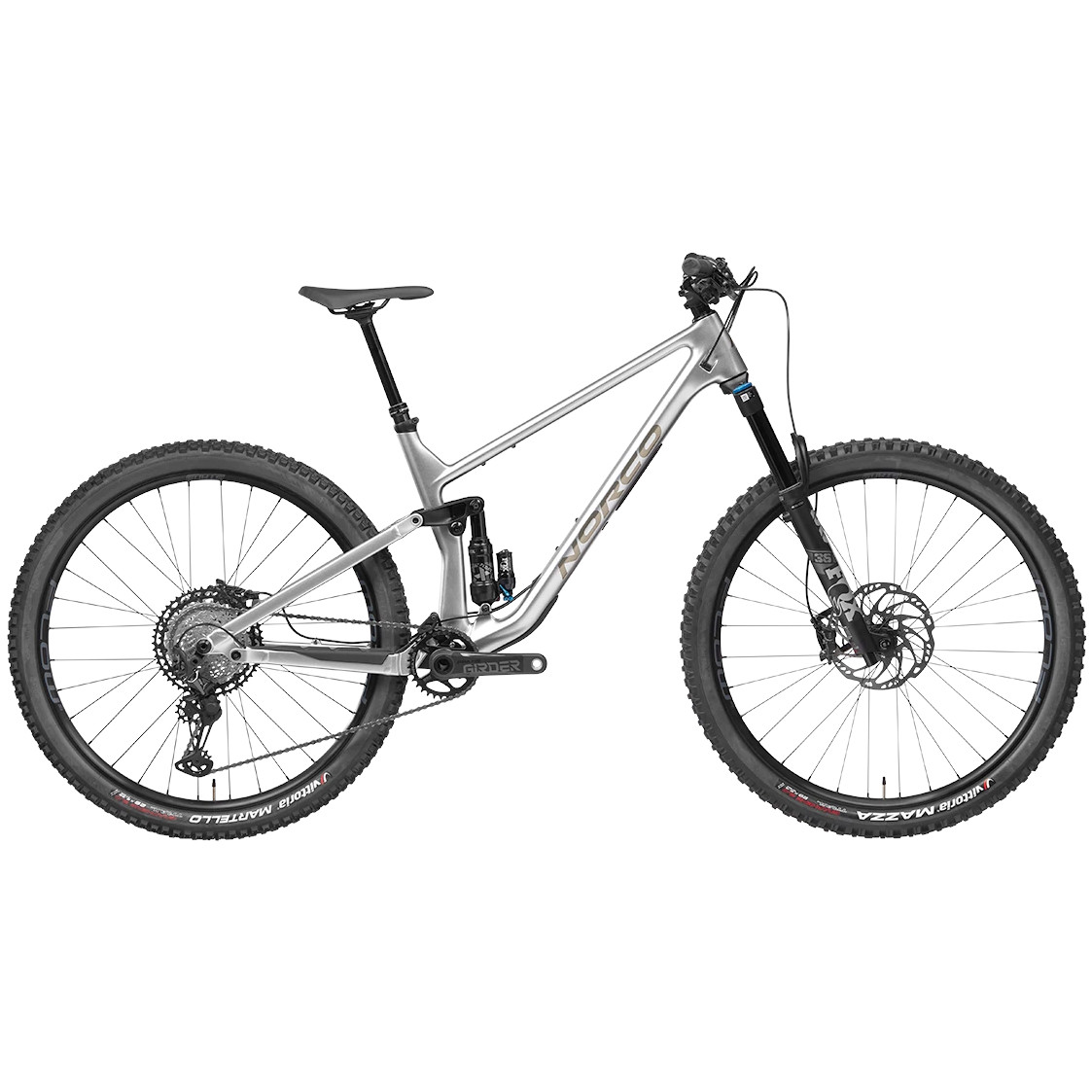- Home
- Cycling
- Bikes
- Mountain Bikes
- Full Suspension Mountain Bikes
- MTB Trail Bikes
Trail Mountain Bikes – What Counts for the MTB All-Rounders
Trail Mountain Bikes are on everyone's mind, they are fast, master rough terrain and are still light and agile. But what distinguishes them from other mountain bike categories? And for whom is a trail or all-mountain bike the right choice? In the following, we'll show you which characteristics make a trail MTB bike a versatile all-rounder, what the bikes can do in comparison with other mountain bikes, and we'll explain what you should look out for when buying your new trail bike. Read more
Trail Bikes – Perfect for off-Road and Trails
Flowy trails, steep climbs, and blocky terrain - the trail bike can do almost anything. It makes no difference whether you're planning an alpine cross, a day tour in the next low mountain range or simply go trail hunting in the neighboring forest. At home on any terrain – this versatility is also reflected in the many different models. However, they all have basic characteristics in common: Most mountain bikes in this category are full-suspension mountain bikes and thus come with suspension fork and shock. This gives you a lot of comfort in any case, and you can confidently rely on the rear's ability to swallow in the terrain. In addition to the trail fullys, there are also the so-called trail hardtails: They allow a more efficient power conversion.They have a rigid rear and only a suspension fork. In the large field of trail bikes, however, hardtail mountain bikes tend to be the exception. The frames are made of aluminum or preferably carbon for extra low weight. Their geometry is specially adapted to trail and touring mountain biking. In detail, this is usually achieved via a flatter seat angle compared to XC, but still steep enough for touring. Short chainstays and a fairly high stack (height difference between bottom bracket center and upper head tube center) support this even more and invite you to play e.g. jumping, dropping and trail surfing (manualing).
So that the frames are even more stable, they are specially reinforced in the head tube, seat stay, bottom bracket area and at the dropouts. For additional rigidity provide in conjunction with the wheels of the Boost dropouts (wheel mounts) for thru axles.
To bring the trail geometry of the frames optimally to show, the rear triangle kinematics (joint system) and the front area is optimized for more suspension travel. The more swallow-friendly suspensions of a MTB for trails convince with 120 to 150 mm of suspension travel at the fork and damper. The higher the suspension travel of the fork, the worse the climbing behaviour can be in the uphill due to a rising front wheel.
Another feature of trail mountain bikes is that the saddle can be lowered via a dropper seatpost. So you don't have the feeling of tipping forward even in particularly steep terrain and you get your bottom over the rear wheel. After the aggressive downhill action, you can simply extend the dropper post again via remote lever for comfortable uphill riding or flat sections.
So that you always steer fast enough in the right direction despite a flatter steering angle and short stem, all-mountain bikes have 760-780 mm wide low-riser handlebars. Wide 27.5-inch or 29-inch wheels, 1x11/12-speed gears, and two- or more powerful four-piston disc brakes complete the set-up of your trail/all-mountain MTB,
Only one problem remains: Most likely you want to go straight into the mountains and enjoy panoramic views without having to train particularly hard for it beforehand. Then an e-mountain bike is probably the even better choice.
However, there is diversity not only in the design, but also in the name. Depending on the bike brand, the trail bike category is often referred to as an all-mountain bike or a touring mountain bike. The term trail bike could initially be read and heard mainly in the US bike brands, but it is now becoming more and more accepted worldwide. That's why we at BIKE24 also speak primarily of trail bikes when it comes to mountain bikes that combine the best of both worlds: a lightweight, sporty design paired with a high degree of off-road mobility. In short, a trail bike is not only a great bike for trails, but also a bike for quick after-work tours on the home trail or for crossing the Alps.
Trail Mountain Bikes and All-Mountain Bikes at a Glance
What distinguishes trail bikes and all-mountain bikes, we have summarized in the following once again.
- As their name suggests, trail bikes are basically mountain bikes designed to be particularly fun on trails.
- Trail bikes are optimized for suspension travel of around 120 and 150 millimeters.
- In addition to fullys, there are also hardtails as a more purist form of trail MTB's.
- Dropper seatpost, 27.5-inch or 29-inch wheels and 1x11 or 1x12-speed drives are installed as standard.
- Depending on the manufacturer, trail bikes are also called all-mountain bikes or touring bikes.
What Should You Look for When Buying a Trail Mountain Bike?
To find the right trail bike for your taste and purpose, you should pay attention to various factors. In any case, you should first think about how and where you want to use your bike. Do you rather ride in the low mountain range, on flowing trails or do you also want to ride your mountain bike in the Alps or in bike parks? Are you planning an alpine cross with your trail bike? Basically, all this is possible with an all-mountain or trail mountain bike. Depending on your preferences, however, you should choose a downhill-heavy or climbing-friendly model. How can you tell? We'll explain that to you in the following.
What Is Important in the Geometry of Trail MTB's or All-Mountain Bikes?
Every season, the mountain bike developers come up with new features for their bikes. Accordingly, year after year improved bikes are developed for trail use and especially more potential in downhill. However, they should always retain their agile handling and be able to bring the biker uphill quickly without a lift. That's why the geometries of mountain trail bikes are balanced, meaning they offer a comfortable seating position with which you can pedal uphill in a relaxed manner and which is suitable for several days in the saddle – for example, when crossing the Alps. In addition, current models are so drive-neutral in terms of kinematics and suspension components that hardly any power is lost on the uphill.
On the trail bike, the biker also adopts a sitting position centrally positioned over the frame, so that he or she can react agilely and nimbly at all times to the conditions of the trail – be it roots or stone fields. It is also important that your trail bike forgives mistakes, i.e. lies stable on the trail. This means that an all-mountain bike must actually combine and balance opposites - many models really succeed surprisingly well!
What Suspension Travel Do Trail Mountain Bikes Have?
With regard to trail bikes, smoothness does not only mean that you can speed over stone fields and downhill sections, but above all that the bike's chassis can withstand a lot and has enough reserves. This does not necessarily mean that the suspension travel must be as long as possible. If you look at the suspension travel of trail bikes, a fairly wide spectrum opens up. At the fork is from about 120 to 160 or even 170 millimeters everything. Most models, however, range between 120 and 150 millimeters.
If you ride a lot on asphalt or are often in the saddle, a fork with lockout function or uphill mode can be interesting. This allows you to block the compression, which can be a great advantage in the aforementioned situations.
At the rear, the suspension travel tends to be rather smaller. The damper should have enough reserves to not punch through in difficult passages, but also be sensitive enough to respond sensitively on flowy trails. So you always get good traction and also a safe feeling in hard terrain.
Which Wheel Size Is the Best for My Trail Bike?
29-inch wheels have proven themselves in many respects, and this also applies to trail bikes. If you want to mountain bike on trails, 29ers benefit from the fact that they roll easily over roots and stones. However, 27.5-inch wheels are also available for the all-mountain/trail category. Some manufacturers also offer up-scaling variants for their complete bikes, which depend on the frame size (S-M: 27.5", L-XL: 29") . The smaller sizes are then equipped with 27.5-inch wheels, the larger sizes with 29er wheels. In addition, there are hybrid models with a 29-inch wheel in front and a 27.5 rear. These so-called "mullet bikes" promise grip and good rollover behavior on the front wheel and agile, nimble handling on the rear wheel for more agility in the corners.
The wheels used are particularly stable and wide thanks to Boost. Thanks to the more favourable Boost spoke angles, wide rims with, for example, 35 mm jaw width or more voluminous Plus tires can be used. The rim rings made of aluminum or extra-light carbon are also designed for greater load capacity with hollow chambers and greater wall thicknesses.
What about the Tires?
You definitely need stable and high-traction tires for shredding over the trail. For this reason, trail bikes come with large-volume lugged tires and 2.3 to, in extreme cases, 2.6 inch tire widths. These are usually also tubeless-ready and with just a little effort your bike will roll even more efficiently without a tube. Some manufacturers use softer rubber compounds and coarser lugs at the front and more rolling tire models with longer-lasting rubber at the rear.
What Is Important for the Groupset and the Brakes?
Most bikes for trail mountain biking currently come with 12-speed gears, where it does not have to depend on every gramme.The transmission range is increased to up to 520% despite only one chainring with 10-52 tooth cassettes. A rear derailleur damping system together with a special chainring (narrow-width) ensures that the chain does not jump off even in rough terrain. If you want the whole cake of durability, more shifting precision and speed, you can also choose a mountain bike with electric shifting in the Trail/AM category. Strong brakes are a matter of course – so you can always rely on your bike on the trail. Due to their wide range of use, trail bike brakes need a mixture of braking power and stability. Classically, two-piston disc brakes with 180-millimetre discs are installed at the front and rear. However, there are also more downhill-friendly versions with four-piston calipers at the front and two-piston calipers at the rear. In this case, 203/180 millimetre brake discs are a popular choice.
What Else Do You Have to Consider When Buying a Trail Bike?
A height-adjustable Vario seat post with handlebar remote control is a must for trail mountain biking these days. This is the only way to adjust the saddle position comfortably from the handlebars when changing quickly from uphill to downhill. Many bikes also score points with integrated shift and brake cables, which give them a very clean look. Trail bikes often have boxes integrated into the frame for a spare inner tube and a pocket tool, so that a breakdown on the road doesn't end your mountain bike fun.
Summary – Is a Trail MTB the Right Bike for You?
Trail bikes master the balancing act between downhill and uphill talent. As all-rounders, they are ideal for anyone who wants a mountain bike for everything: for touring, for crossing the Alps or for a quick spin on the trails outside their front door. Depending on personal taste and budget, there is the right trail bike – from rather light and optimised for speed to somewhat more robust and downhill-hungry.
In short: If you love fast downhills, enjoy flowing trails and still want to pedal uphill in a relatively relaxed manner, you will find the right mountain bike in a trail bike.
